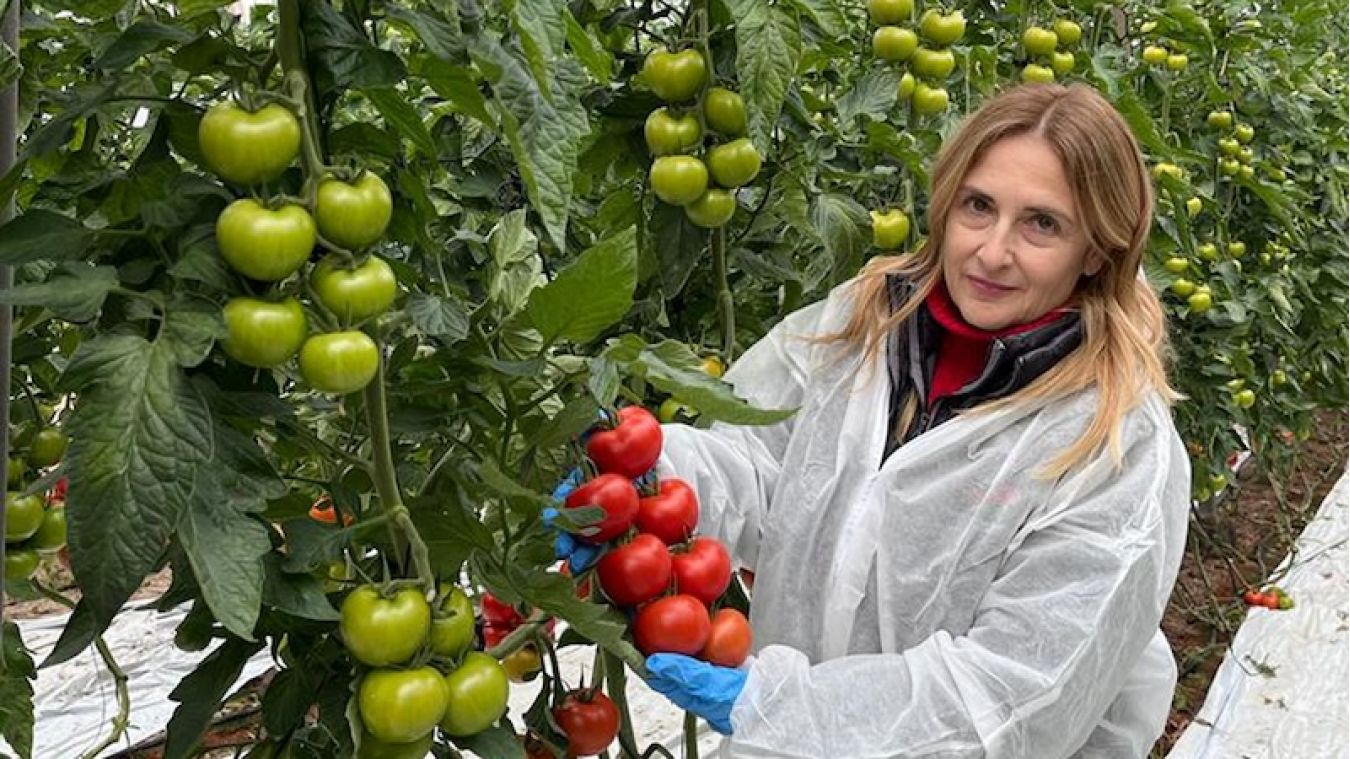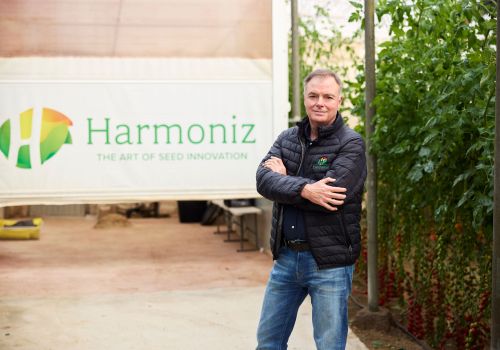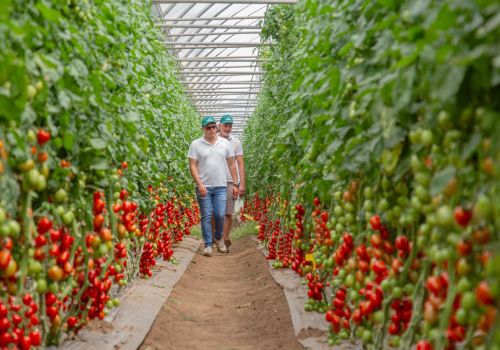
“Our goal is to provide the farmer with the greatest confidence”

An interview with María José Flores Membrives, East Area Manager at Harmoniz Ibérica.
At Harmoniz new tomato varieties with resistance to the ToBRFV are developed, based on the conditions in which they will be grown, thus guaranteeing their maximum adaptability, and without forgetting aspects such as productivity and organoleptic and gustatory qualities.
Question: How has ToBRFV research evolved in Harmoniz in recent years?
Answer: At Harmoniz, our large team of breeders hasbeen working for years on resistance to the Tomato Brown Rugose Fruit virus (ToBRFV) through a unique screening system (Plant Virus Inoculation System – PVIS), to deliver on the company’s commitment to continuously investigate all those diseases that concern the farmer, while ensuring the highest quality of the product. Thanks to this system, Today, Harmoniz’s range of varieties resistant to ToBRFV counts over 20 hybrids. All of them have been tested several times under severe conditions of controlled inoculation in our PVIS, preserving high production and commercial quality and highly limiting the spread of the virus.
We monitor them for several years, testing our hybrids in dozens of different areas, under different growing conditions and crop management to achieve the best adaptation in the widest possible area. And all this with the sole objective of providing the greatest peace of mind to the farmer and the highest level of satisfaction to the consumer.
Q: Is resistance to the ToBRFV your priority in new tomato developments?
A: In addition to incorporating resistance to the ToBRFV, we also aim at responding to the needs of the entire fresh produce chain, addressing agronomic challenges, such as yield and resistance to other pathogens, without ignoring the explicitly commercial ones, such as shelf life, flavor, nutritional values or freshness of the product.
In fact, our objective, in addition to incorporating resistance to the rugose virus of all our new varieties, is introduce varieties that the farmer wants to grow because of the security they offer and that the consumer will be keen to buy again because of their quality. This is a years-long process that requires effort and constant dialogue with all the players in the chain, from the R&D stages to the commercial introduction of a given variety in different markets.
Two resistant varieties
Q: Flor de Andalucía and Gabor are two of its varieties with resistance to the rugose virus.
What added value they bring to the market?
A: Flor de Andalucía is a midi-plum cherry for cluster harvest which, agronomically, has a strong plant, and adapts well to different growing areas, long cycles and early transplants. In addition to its resistance to TOBRFV, this variety offers a high production of intense red fruits with very good flavor, and a very attractive cluster.
The resistance of Gabor, a new mini-plum for loose harvest , allows you to grow the variety in all transplant cycles, both in winter and spring. In other words, Gabor allows you to close a complete growing cycle. With its strong plant and short internodes, Gabor’s fruit setting is regular and uniform grows very well both under cold and hot temparatures Additionally, It is low sensitive to cracking or green shoulders, while it’s copious splitting clusters ensure high production to growers.
Indeed, if it stands out for something, it is for its fruit quality, very firm fruits with a great flavor and intense red color. Those who have already cultivated it trust Gabor because it gives them great agronomic protection, and they know that they will achieve high quality production, which, in the end, will allow them to obtain more profits from their crops.




